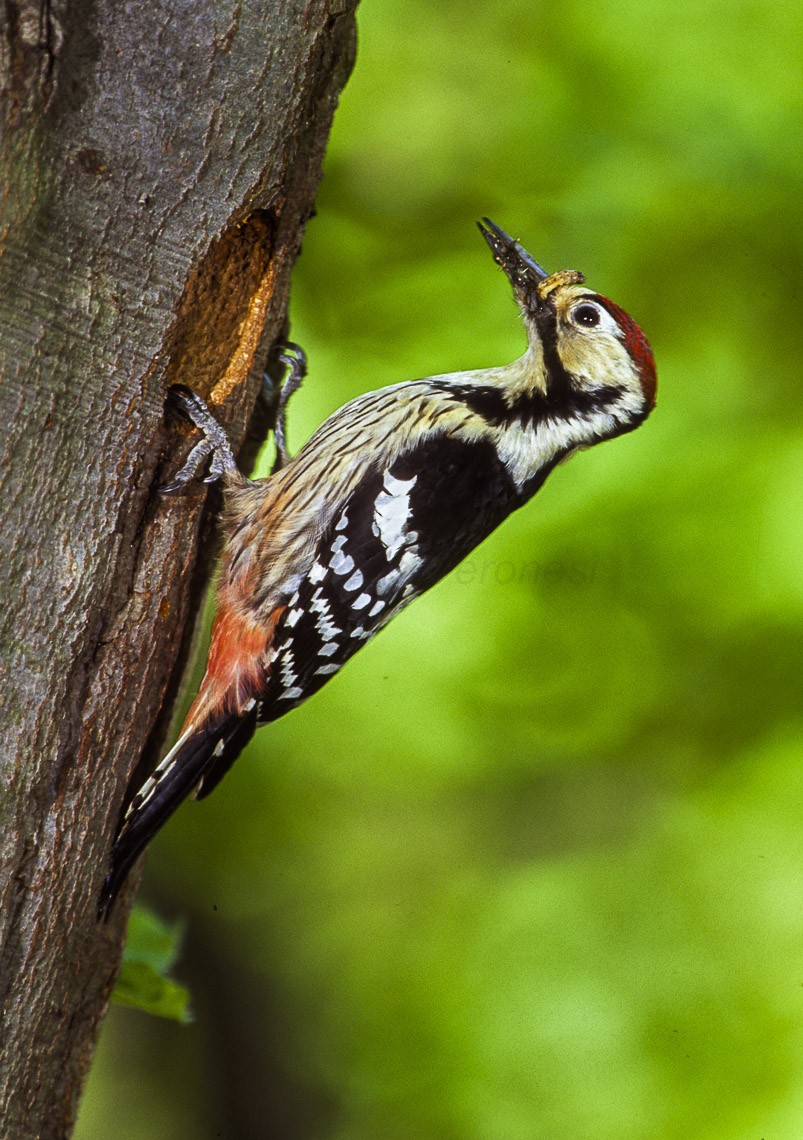White-backed Woodpecker
A species of Eurasian Pied Woodpeckers Scientific name : Dendrocopos leucotos Genus : Eurasian Pied Woodpeckers
White-backed Woodpecker, A species of Eurasian Pied Woodpeckers
Botanical name: Dendrocopos leucotos
Genus: Eurasian Pied Woodpeckers
Content
Description People often ask General Info
 Photo By Francesco Veronesi , used under CC-BY-SA-2.0 /Cropped and compressed from original
Photo By Francesco Veronesi , used under CC-BY-SA-2.0 /Cropped and compressed from original Description
It is the largest of the spotted woodpeckers in the western Palearctic, 24–26 cm long with wing-span 38–40 cm. The plumage is similar to the great spotted woodpecker, but with white bars across the wings rather than spots, and a white lower back. The male has a red crown, the female a black one. Drumming by males is very loud, calls include a soft kiuk and a longer kweek. 
Size
28 cm
Colors
Black
Red
White
Life Expectancy
3-11 years
Nest Placement
Cavity
Feeding Habits
White-backed Woodpecker primarily feeds on wood-boring beetles, larvae, and other insects, supplementing with nuts, seeds, and berries. They forage by pecking at dead wood to extract prey and display unique adaptations for prying under bark to locate food.
Habitat
The white-backed Woodpecker thrives in old-growth forests that lean towards deciduous or mixed, often with deadwood, across temperate regions like the taiga and montane zones. These birds prefer mature, dense canopies over 80 years old, often near water and on steep terrain. They adapt to habitats from lowland to high elevations across Northeast Asia and some parts of Europe.
Dite type
Insectivorous
People often ask
General Info
Feeding Habits
Bird food type
Distribution Area
The nominate race D. l. leucotos occurs in central and northern Europe, with the race D. l. lilfordi found in the Balkans and Turkey. Ten further races occur in the region eastwards as far as Korea and Japan. It is a scarce bird, requiring large tracts of mature deciduous forests with high amounts of standing and laying dead wood. Numbers have decreased in Nordic countries. In Sweden, its population decline has caused the Swedish government to enact protection for the species in the national Biodiversity Action Plan. 
Species Status
Not globally threatened.